Under the Rising Sun

Gentle Readers,
We screwed up here at The Daily yesterday. Not unusual, as I am sure you will attest, but I got caught this time by two senior intelligence officials and I need to explain. Typing quickly, I noted that the ship from which my pal Mac acquired the “small” battle flag- the mighty IJN BATTLESHIP Nagato, was a heavy cruiser. No, no, no.
I feel bad, and hence, this morning’s outing will be a “letter to the editor” from a distinguished (and still serving) government official.
“Vic: Ref your discussion with Admiral Mac about the battle flag of the Nagato, I have to correct you on a small error. The IJN Nagato was a battleship, not a battlecruiser (she displaced 42,850 tons with her full wartime full load and mounted 16 inch guns). Admiral Isoruko Yamato issued his famous order of December 2, 1941, to launch the attack on Pearl Harbor from the Nagato, then his flagship. A 16-inch shell acquired from Nagato (and/or its sister ship, Mutsu) and modified for aerial bombing, was credited with sinking the battleship USS Arizona.”
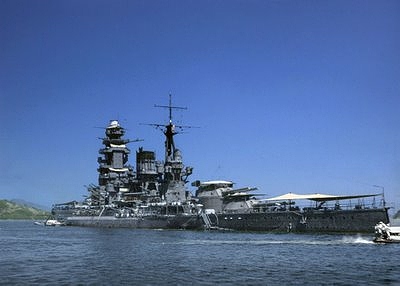
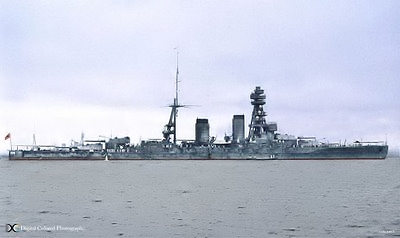
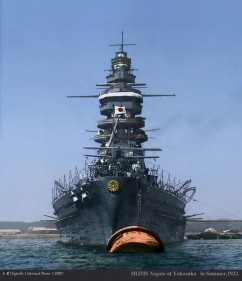
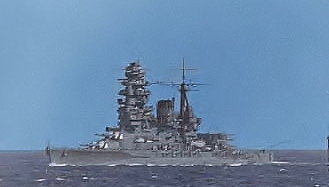
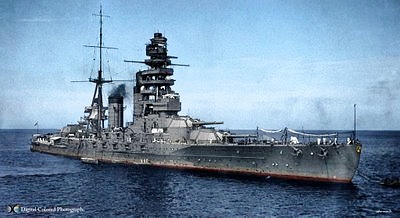
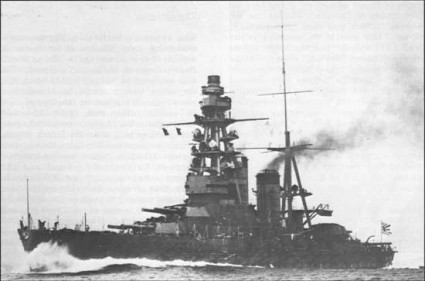
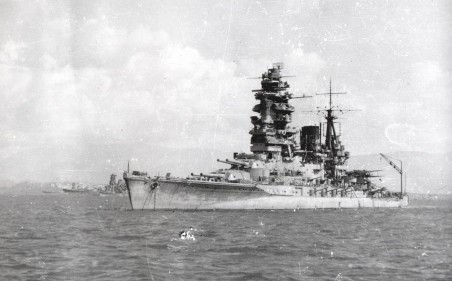
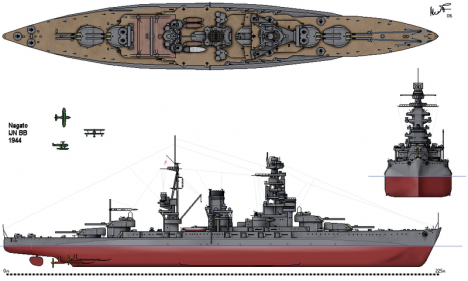
As you know, this vessel met its end at Bikini Atoll, as a result of damage sustained during Test Baker, Operations Crossroads on July 26, 1946. My buddy Art’s participated in that test as a civilian scientist and member of the Manhattan Project’s Radiological Safety and Survey Team. One of his tasks was to instrument the target ships prior to the test and he boarded the Nagato, climbed the Pagoda mast, and went all throughout the ship’s spaces. Nagato underway in the 1920’s:
The Nagato October 1944:
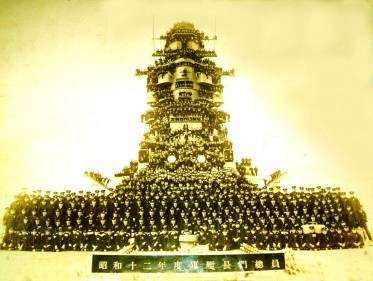
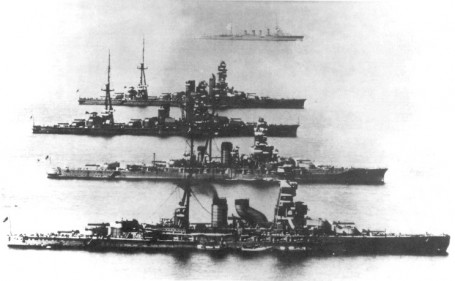
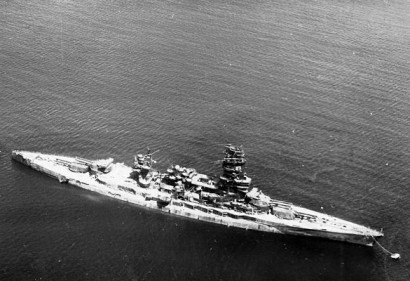
In the photo above, starting from the top, are the Nagato, Kirishima, Ise, and Hyuga (the latter two converted into battleship/aircraft carriers after the Battle of Midway). Here she is at anchor in Yokosuka in 1945:
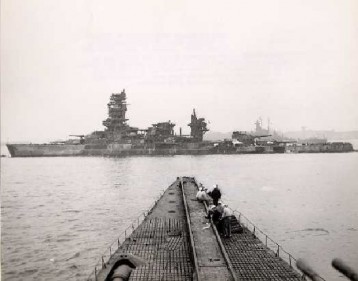
Shown below is how the once-proud Nagato looked before the test in 1946:
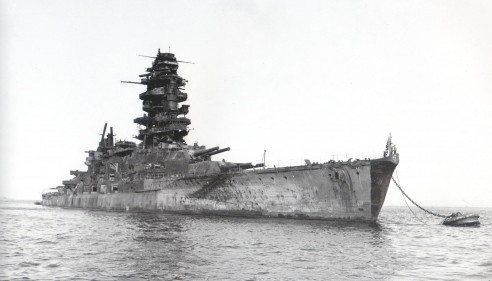
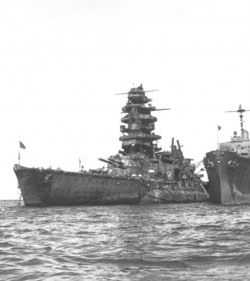
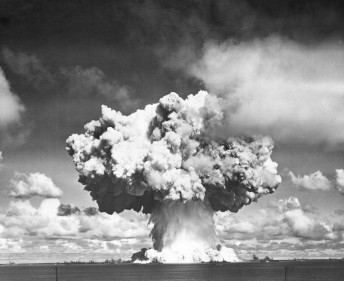
You can just make out the Nagato out in this photo taken from the shore, silhouetted against the lower left of the base surge. (Note: the image below is reversed from the one above). Noel Gaylor was the commander of the overall operation, an account of which was told in the Admiral’s obituary we published not long ago.
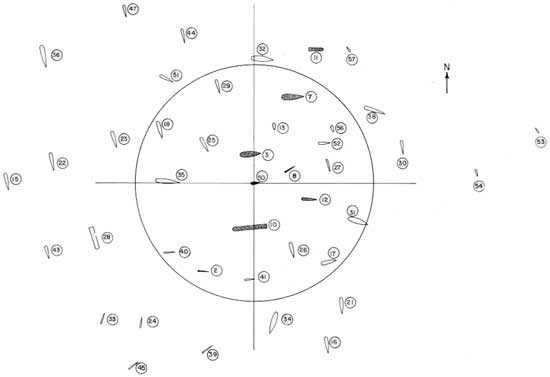
The chart above shows the position of the Nagato in the test relative to the actual position of the point of detonation from the submerged device (#7 in the upper right quadrant — USS Arkansas, #3, moored within 500 feet of the detonation point, reportedly sank within 19 seconds). Nagato was heavily damaged by the Test Baker shot – the external paint burned, the upper works broken and twisted, armor decks were bent, and seams were opened in her hull by the shock wave (the initial surge reportedly moved her 400 yards). She slowly filled, capsized and sank in the lagoon, 29 July 1946.” See: “The Final Voyage of the HIJMS Nagato Battleship” for some interesting details on the poor condition of the ship after the war and challenging voyage to the test area: http://www.bikiniatoll.com/nagatolog.html
I wrote my pal back: saying “I have a manuscript copy of an account by Edward Smith Gilfillen, Jr., who was a member of the Intelligence Mission to Japan in 1946, and the XO of ex-IJN Nagato for that voyage.
The technical report of the mission is at:
http://www.scribd.com/doc/32940827/USN-Technical-Mission-to-Japan-History-of-Mission-US-1946
My Uncle Jim got the manuscript from Gillfillan’s widow, who he said in his cover memo had also provided “18 HUGE radio tubes and a big variable condenser from the NAGATO of the Antique Wireless Associations Museum.” (caps used in the original note).
Correcting the record is always problematic, but I hope you will accept my apologies for failing to think while typing, a real hard of the trade.”
Copyright 2012 Vic Socotra www.vicsocotra.com
